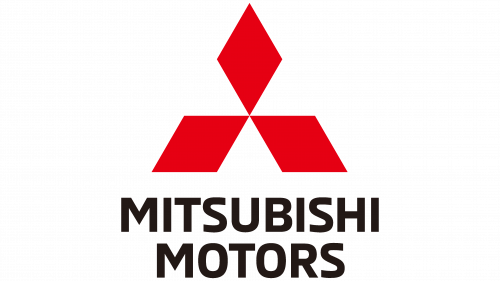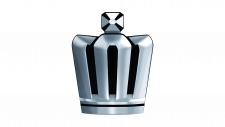Mitsubishi Logo
Mitsubishi, originally hailing from Japan, is a diversified conglomerate operating globally. Its current ventures span from automobiles, under Mitsubishi Motors, to finance, machinery, energy, and chemicals, among others. While the automotive sector has a prominent presence in North America, Europe, and Asia, the conglomerate’s other businesses have vast international footprints. The ownership of Mitsubishi is spread, with multiple stakeholders. Notably, the Mitsubishi keiretsu, a group of interlinked companies, holds significant influence. As of now, Mitsubishi stands as a hallmark of innovation, sustainability, and diversified business endeavors on the global stage.
Meaning and history
Founded in 1870 by Iwasaki Yataro, Mitsubishi began as a shipping firm. As Japan modernized, so did Mitsubishi, branching into various sectors, from coal mining to banking, shipbuilding, and even aircraft construction. Post-WWII, allied forces mandated Mitsubishi’s breakup into multiple entities, dismantling the vast zaibatsu (financial conglomerate).
As Japan rebuilt, these entities, though separate, coalesced under the shared Mitsubishi name and iconic three-diamond mark. By the 1970s, Mitsubishi Motors emerged, capitalizing on the automobile boom. Additionally, Mitsubishi Heavy Industries, another offspring, delved into aerospace, machinery, and infrastructure.
Ownership throughout has remained largely with the Iwasaki family and related stakeholders, but with interlinked “keiretsu” structures promoting mutual support and stability. Partnerships too have played roles: notably, a brief alliance with DaimlerChrysler in the early 2000s for Mitsubishi Motors.
Today, the Mitsubishi legacy permeates various industries, while maintaining its Japanese roots and collaborative ethos.
1870 – 1875
The initial insignia of the company draws its essence from its very name: “Mitsubishi”, a fusion of “mitsu” (meaning “three”) and “hishi” (interpreted as “water chestnut” in Japanese). This water chestnut imagery in Japanese culture often signifies a diamond or rhomboid. Hence, the emblem emerges as an amalgamation of the Iwasaki lineage’s emblem, which showcases three interlocking diamonds of varying dimensions, and the unique three-oak-leaf pattern representing the Yamauchi clan, who held sway over Shikoku, Yataro’s birthplace. These two distinct motifs were incorporated simultaneously, blending familial and regional histories.
1875 – 1914
Within the Mitsubishi emblem, there were clear allusions to two distinct transportation features: an airplane’s propeller and a vessel’s blade. Such a design choice harkens back to the enterprise’s foundational ties and its emphasis on engineering prowess. The primary design element encompassed the crafting of three stretched diamond figures. Instead of converging at the center, these diamonds created a circular space, symbolizing a revolving mechanism. During this phase, the company also experimented with transitioning to a vibrant red hue, suggesting a bold evolution in its branding journey.
1914 – 1953
In 1914, with Mitsubishi’s growing footprint across diverse technological domains and the ultimate embrace of its name, the company’s emblem underwent a transformation. Given the enterprise’s multifaceted transport engineering ventures of the era, there was a move to amalgamate the symbolism from two distinguished lineages with motifs of maritime blades and aviation propellers. This merger led to the birth of extended diamond shapes, converging centrally at their tips. In a striking shift, the design team infused the emblem with a burst of color, trading the somber black for a vibrant red. This change not only reflected the brand’s evolution but also highlighted its dynamic spirit in the ever-advancing technological landscape.
1953 – Today
Currently, the blade representations have been harmonized to resemble three broad diamond shapes. The twin elements at the bottom rest laterally, while the pinnacle diamond ascends, nestled at its most slender section. They converge centrally, creating a unified design. Additionally, logo variations exist, some featuring accompanying text and others purely symbolic. The accompanying script captures the global titan’s moniker, positioned gracefully beneath the emblematic figure. The design underscores the brand’s commitment to consistency and unity, even as it adapts and evolves in a rapidly changing corporate landscape.
1970 – Today
To bolster its visual identity, the name “Mitsubishi” was prominently displayed beneath the emblem, primarily in print and media representations.
The visual essence of Mitsubishi is rooted in historical insignias, drawing inspiration from the Iwasaki clan’s emblem and the Yamauchi lineage’s symbol. The latter once dominated the region where Iwasaki Yataro hailed from. Originally, the design featured overlapping oak leaves and diamond shapes. Over time, creative minds merged these motifs, crafting a singular diamond emblem. This transformation echoed the interpretation of “hishi” in Japanese, denoting a “water chestnut” and, by extension, the coveted gemstone, giving rise to its colloquial tag “triple diamonds.”
Furthermore, in Japanese tradition, a configuration with three distinct elements radiating outwards is termed “triseps”, a symbol of divine force. Evidently, the company’s originator embedded profound significance into its title, envisioning it as a celestial envoy and a terrestrial gem. This intricate tapestry of meanings finds its expression in Mitsubishi’s iconic emblem.

















